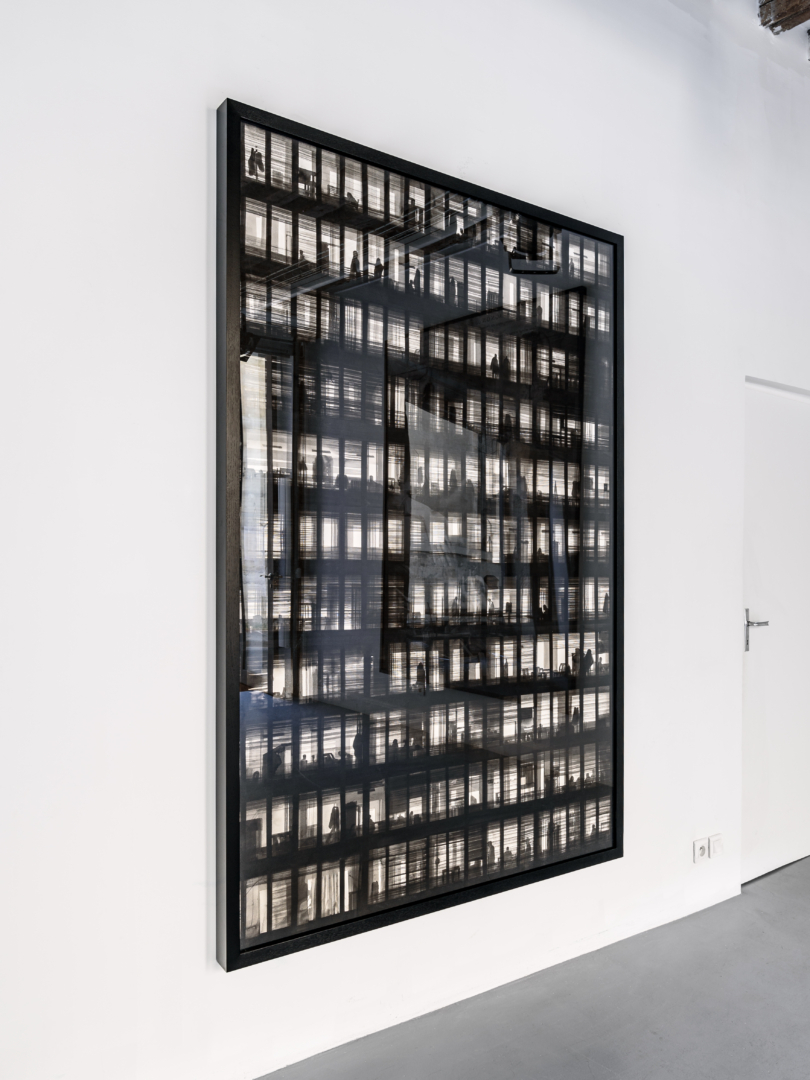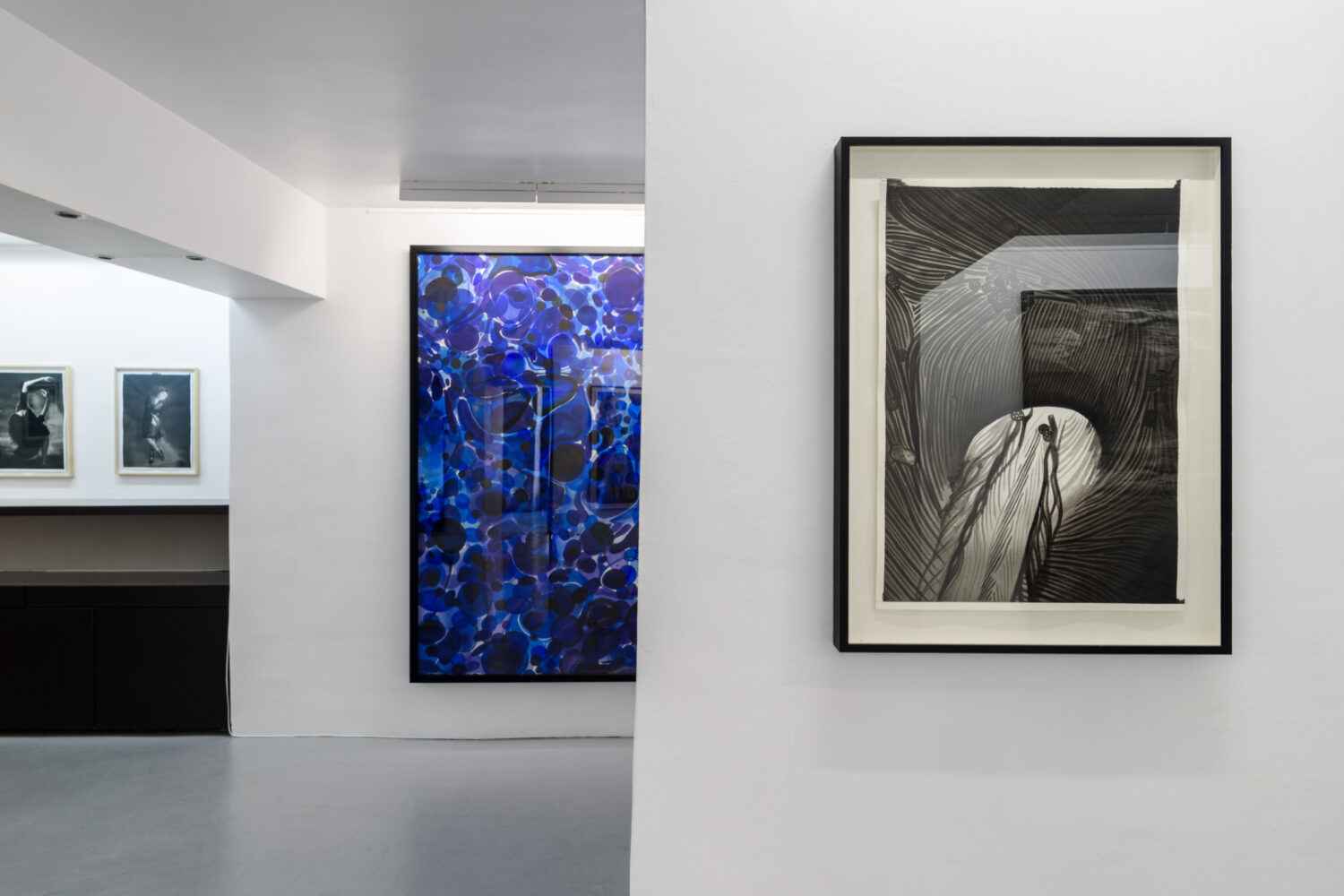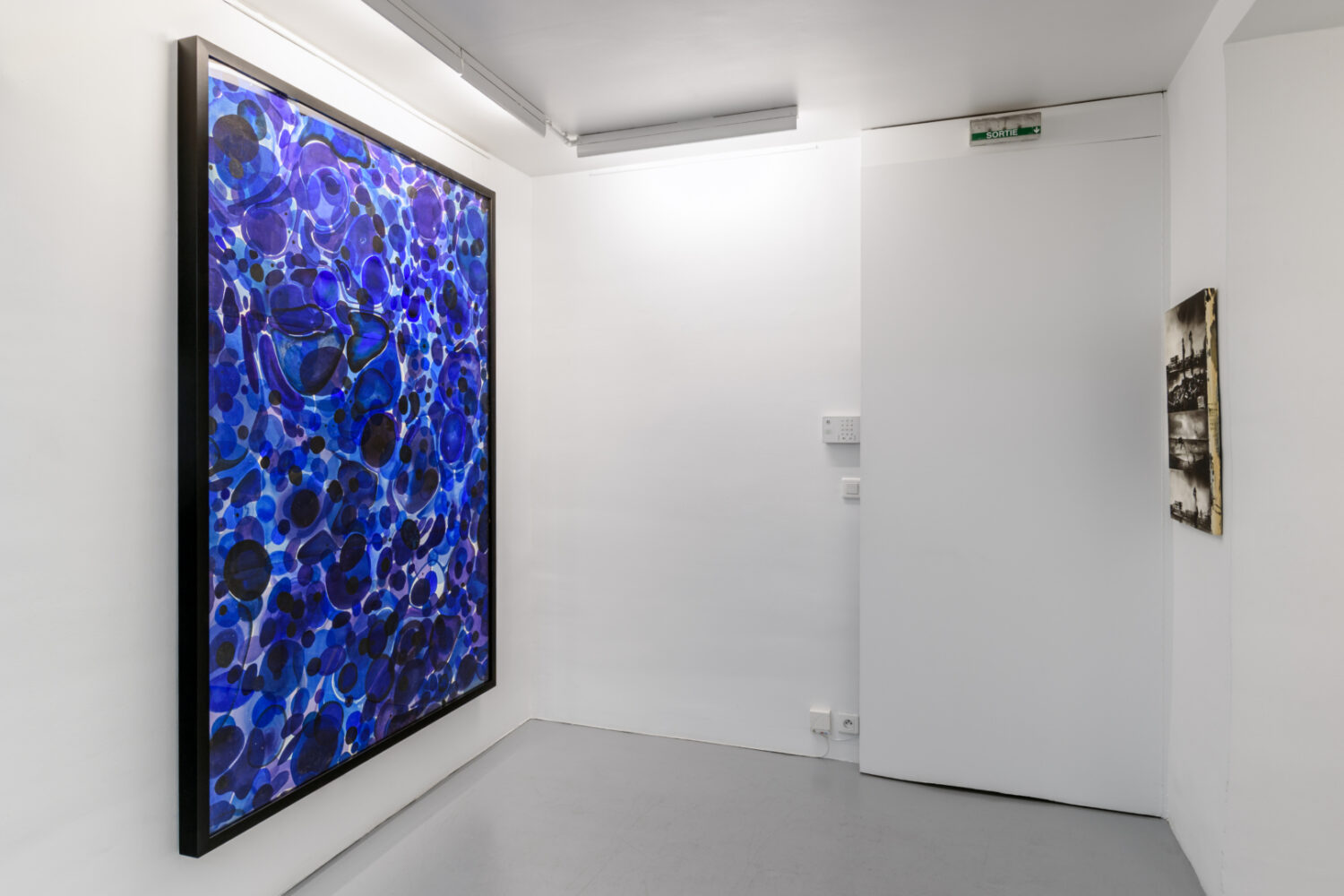PRISKA PASQUER PARIS
RADENKO MILAK
Imagine Reality
OPENING
Saturday, 7.10.2023
from 6 to 9 pm CEST
7 October 2023 – 5 November 2023
Imagine Reality Like a chronicler of modern-day life, the artist Radenko Milak – who was born in Travnik, Bosnia and Herzegovina, in 1980 – uses the mirror of painting to explore the major questions and upheavals of our time. PRISKA PASQUER PARIS is proud to present the individual exhibition ‘Imagine Reality’, featuring new large- and small-format works. Milak came to international fame in 2017 through ‘University of Disaster’, his artistic submission for the Bosnia and Herzegovina pavilion at the Venice Biennale. Since then, his paintings have been featured in group and individual exhibitions around the world, most recently in the Museum of Contemporary Art (Zagreb, Croatia), at Marta Herford (Herford, Germany) and the Folkwang Museum (Essen, Germany). Pictures from films, magazines, newspapers and the internet – together with microscopic and telescopic images from scientific research – form the basis for various thematic series in which the artist comes to terms with the social, ecological, political and economic unrest and crises that are currently shaping the world we live in. Using watercolours, he transfers the documentary images to the medium of painting, exploring how the two media relate to and reshape one another today. Seen from a distance, his works look like photographs; it is only when we approach them that Milak’s masterly artistic signature reveals itself through the water streaks characteristic of watercolour painting and through the interplay of transparent and opaque colour fields. ‘Imagine Reality’ showcases works in which documentation and fiction blur into abstract worlds of imagination when the photographic likeness is combined with the painted narrative. Here, our view is disrupted again and again by the painterly structure. On the one hand, we are aware that the photographic images represent the truth and understand their documentary value, but at the same time, there is a growing impression that it is all illusory. Whereas ‘New Delhi’ (2023) opens up an endlessly vast panoramic view of the Indian metropolis while symbolising the growing global urbanisation, ‘Neighbors’ (2023) conveys city life as a state somewhere between anonymity and community. Although clearly defined, the pictures appear detached from space and time. The intriguing relationship between photography and painting leads objective reality and illusory space to merge seamlessly. One recurring factor in Milak’s art is the Anthropocene era: What will the world be like in the wake of the climate catastrophe? How will people, nature and technology behave towards each other ecologically? In various works, Milak makes the dimensions of the geological shift visible. In a large-format collage, ‘Anthropocene, Amazon Fire 2019’ (2020) tells us about the Amazon rainforest fire as a historical consequence of human actions. By contrast, the brightly coloured microplastics in the oceans look harmless and creepily pretty – as does the microfibre pollution in the Gulf of Mexico, which is only visible through a microscope. These images document the enormous ecological footprint that humankind has left behind and the irreversible destruction it has wrought upon the Earth. However, by translating the environmental destruction to abstract imagery, the climate catastrophe is located to an indeterminate state between present and future, creating worlds of perception that make us stop and think. Adapting media images through paintings slows things down due to the artistic transfer, which also influences how it is received. In spite of the disquieting and explosive issues, the images in the exhibition become more tangible and, in the long term, constitute an effective call to action.
Wie ein Chronist der Gegenwart setzt sich der 1980 in Travnik, Bosnien and Herzegowina geborene Künstler Radenko Milak mit den großen Fragen und Umbrüchen unserer Zeit auseinander – durch den Spiegel der Malerei. PRISKA PASQUER PARIS freut sich mit der Einzelausstellung „Imagine Reality“ neue Arbeiten großer und kleiner Formate zu zeigen. Internationale Bekanntheit erlangte Milak 2017 durch seinen künstlerischen Beitrag „University of Disaster“ für den Pavillon von Bosnien und Herzegowina der Biennale Venedig. Seitdem reisen seine Gemälde in Gruppen- und Einzelausstellungen um die Welt, zuletzt im Museum of Contemporary Art Zagreb, im Marta Herford, Deutschland und im Folkwang Museum in Essen.
Bilder aus Filmen, Magazinen, Zeitungen und dem Internet sowie Mikroskop- und Teleskopaufnahmen der wissenschaftlichen Forschung bilden die Basis unterschiedlicher thematischer Serien, in denen sich der Künstler mit den sozialen, ökologischen, politischen und wirtschaftlichen Unruhen und Krisen befasst, die uns gegenwärtig prägen. Mit Aquarellfarbe überführt er die dokumentarische Bildwelt in das Medium der Malerei und erkundet dabei, wie sich die beiden Medien heute zueinander verhalten und gegenseitig neu entwerfen. Von weitem betrachtet erwecken seine Arbeiten den Eindruck von Fotografien, erst bei näherem Herantreten offenbart sich Milaks virtuose, künstlerische Handschrift durch die für die Aquarellfarbe charakteristischen Wasserränder und das Zusammenspiel aus transparenten und deckenden Farbflächen.
„Imagine Reality“ zeigt Arbeiten, in denen durch die Vereinigung des fotografischen Abbilds mit der malerischen Erzählung Dokumentation und Fiktion zu abstrakten Imaginationswelten verschwimmen. Immer wieder wird durch die die malerische Struktur der Blick der Betrachter*innen irritiert. Einerseits ist da das Wissen um die Wahrhaftigkeit der Bilder und den dokumentarischen Wert der Fotografie, andererseits wächst der Eindruck des Fiktiven.
Während „New Delhi“, 2023, einen unendlich weiten Panoramablick über die indische Metropole eröffnet und sinnbildlich für die wachsende globale Verstädterung steht, macht „Neighbors“, 2023, das Leben in der Stadt als einen Zustand zwischen Anonymität und Gemeinschaft begreifbar. Trotz ihrer Konkretheit in der Darstellung wirken die Bilder losgelöst von Raum und Zeit. Durch die spannungsvolle Beziehung zwischen Fotografie und Malerei gehen objektive Realität und Illusionsraum nahtlos ineinander über. Eine wiederkehrende Auseinandersetzung in Milaks künstlerischer Praxis bildet das Zeitalter des Anthropozäns: Wie wird die Welt nach dem Ende der Klimakatastrophe aussehen? Wie werden sich Mensch, Natur und Technik ökologisch zueinander verhalten? In verschiedenen Arbeiten macht Milak die Dimensionen des geologischen Wandels sichtbar. „Anthropocene, Amazon Fire 2019”, 2020, erzählt in einer großformatigen Collage über den Brand des Amazonas als historische Konsequenz des menschlichen Handelns. Ungefährlich und schaurig-schön erscheinen dagegen die bunten Farben des Microplastiks im Meer oder die Mikrofaserverschmutzung im Golf von Mexiko, die erst durch den Blick durch das Mikroskop sichtbar werden. Zwar dokumentieren die Bilder den gewaltigen ökologischen Fußabdruck des Menschen und die irreversible Zerstörung, die er auf der Erde anrichtet. Doch durch die Übersetzung der Umweltzerstörung in abstrakte Bildwelten wird die Klimakatastrophe in einen unbestimmbaren Zustand zwischen Gegenwart und Zukunft verortet und schafft Wahrnehmungswelten, die zum Nachdenken anregen.
Durch die malerische Anverwandlung von medialen Bildern, eröffnet sich ein dem künstlerischen Transfer geschuldeter Moment der Entschleunigung, der auch auf die Rezeption übergeht: Trotz der beklemmenden und brisanten Themen werden die Bilder in der Ausstellung greifbarer und langfristig als „Call to Action“ wirksam.
Dr. Wiebke Hahn





















